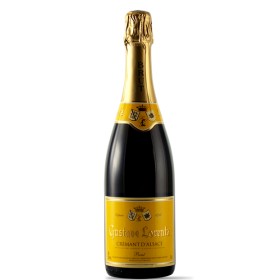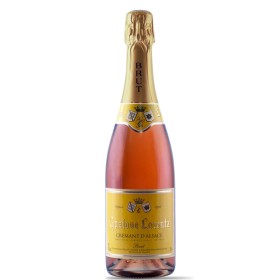- Mondo Vino
- 4251 views

Alsace, thanks to the Roman domination, already at the end of the first millennium boasts 160 localities that stand out for the cultivation of the vine. In the late Middle Ages Alsatian wines are counted among the most prestigious in Europe and see their peak of notoriety at the end of the sixteenth century. With the Thirty Years War, from 1618 the region was destroyed, sacked and scourged, consequently viticulture also found its decline. The end of the First World War finally marks the rebirth of viticulture in Alsace when the winemakers come to an agreement and begin to pursue a policy based on the quality and enhancement of typical vines. Since 1945 the wine production areas have been identified and delimited and strict production standards have been defined, which will then lead to the recognition of the Controlled Designations of Origin Alsace in 1962, Alsace Grand Cru in 1975 and Crémant d'Alsace in 1976. Alsace has a unique terroir: the Vosges massif shelters from the humid ocean currents thus ensuring a semi-continental and sunny climate. The vineyards are located in a hilly area between 200 and 400 m asl, thus ensuring optimal irradiation and favoring a slow and regular ripening of the grapes. The terrain is varied; in fact we find granite that alternates with limestone, clay, schist and stoneware. The imprint of the terroir gives Alsatian wines a singular and complex note, very typical.
DENOMINATIONS:
AOC ALSACE This denomination guarantees that the wine was produced and bottled in Alsace. One of the seven allowed vines is also indicated, in some cases it can be a combination of several vines. It can be completed with an indication of the municipality and possibly with the place of production. The ideal serving temperature for these wines is between 8 ° and 10 ° centigrade. These wines can generally be drunk young and give their best between 3 and 5 years after the harvest.
AOC ALSACE GRANDS CRUS Only 51 terroirs in the whole of Alsace can boast this appellation. Furthermore, only 4 grape varieties are allowed: Riesling, Moscato, Pinot Grigio and Gewurztraminer. The wines that have obtained this denomination are unique, complex and devoted to long aging. The ideal serving temperature for these wines is between 8 ° and 10 ° centigrade. These must be stored lying down for several years before they can be fully appreciated, at a temperature of about 13 ° in the cellar.
AOC CRÉMANT D'ALSACE These are sparkling wines produced according to the classic method. The main grape is Pinot Bianco, but also Pinot Grigio, Riesling, Chardonnay and Pinot Nero can obtain Crémant Rosé. Alsace Crémant are the best French Crémant. The ideal serving temperature for these wines is between 5 ° and 7 ° centigrade.
For completeness we also mention the two most noble but less drunk appellations of Alsace:
VENDANGES TARDIVES This term indicates exceptional wines produced with grapes harvested in overripe thanks to the development Botrytis cinerea (noble rot) which favors the concentration of aromas, sugar and acidity and gives these pasty wines an incomparable power and complexity.
SÉLECTION DE GRAIN NOBLES Obtained from the subsequent selection of the grapes affected by Botrytis. The concentration makes the identity of the grape less perceptible in the wine to the advantage of exceptional power, complexity and persistence. We can speak of real masterpieces.



